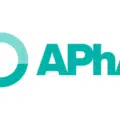Author(s)
Kristin N. Rieser, Pharm.D., BCACP
Stuart T. Haines, Pharm.D., BCPS, BCACP, BC-ADM
1. Blood pressure categorizes and terminology have changed…again. The new ACC/AHA/AAPA/ABC/ACPM/ACG/APhA/ASH/ASPC/NMA/PCNA (that’s a mouthful!) guidelines for the prevention, detection, evaluation, and treatment of high blood pressure (BP) in adults now have four BP categories:
- normal BP is systolic <120mmHg and diastolic <80mmHg
- elevated BP is systolic 120 to 129mmHg and diastolic <80mmHg
- stage 1 hypertension is systolic 130 to 139mmHg or diastolic 80 to 89mmHg
- stage 2 hypertension is systolic >140mmHg or diastolic >90mmHg.
These changes were made based on an increasing body of observational data documenting a progressively higher risk of cardiovascular (CV) morbidity as the BP increases from one category to the next. With these new BP cutoffs, the percentage of people in the US with hypertension increases rather dramatically when compared to the JNC-7 classification system (46% versus 32%). Moreover, more than 75% of older adults (age 65 and older) now have high blood pressure.
2. The goal is <130/80mmHg. Period. OK, yes, you still need to exercise clinical judgment (e.g. don’t treat a frail older adult to this goal!) but irrespective of the threshold for initiating pharmacotherapy, all adult patients being treated in the outpatient setting have a BP goal of <130/80mmHg. Historically this has not been the case. Goals were often different based on age and comorbidities such as diabetes, chronic kidney disease, or ischemic heart disease. For example, the most recent American Diabetes Association Standards of Care still endorse a BP goal of <140/90 with the option of decreasing the goal to <130/80 for patients at high-risk for a CV event.
3. ACCORDing to the experts you should not SPRINT to a BP goal of less than 120mmHg. How the SPRINT trial results should impact BP goals has been a hot topic since 2015. Meta-analyses and systematic reviews published over the last 2 years have provided strong support for using a more intensive approach, however, identifying an optimal BP goal has been challenging. Despite the reduction in strokes seen in ACCORD and the reduction in cardiovascular events seen in SPRINT, we still do not have sufficient evidence to support a systolic BP goal of <120mmHg for all patients. It has been argued that a BP of <130mmHg in clinical practice is roughly similar to the BP goal of <120mmHg used in the SPRINT trial because of the BP measurement techniques used during the study. (See the iForumRx Commentaries – Pulling Ahead After a Sprint – Evidence for Lower Blood Pressure Goals by Eric MacLaughlin and Blood Pressure Control and Diabetes: What Should Our Goal be ACCORDing to the Evidence? By Timothy Gladwell)
4. Out-of-office BP measurements are clinically useful. There is mounting evidence that out-of-office BP monitoring is a better predictor of long-term cardiovascular outcomes than office-based BP measurement. Moreover, out-of-office BP monitoring can lead to clinically useful reductions in blood pressure when used in an overall program of hypertension management. Therefore, the authors recommend using out-of-office BP monitoring to confirm the diagnosis, aide in the titration of medications, and to rule out conditions such as white coat hypertension or masked hypertension. Out-of-office techniques include home blood pressure monitoring and ambulatory blood pressure monitoring. Unfortunately, these techniques can be costly (e.g. purchasing a home BP monitor by patients and ambulatory BP monitors by providers) and everyone needs to be trained on how to properly use the equipment.
5. Use the ACC/AHA Pooled Cohort Risk Assessment from the 2013 lipid guidelines to determine ASCVD risk. In patients without established CVD, the authors recommend calculating the patient’s cardiovascular disease risk before deciding whether pharmacotherapy should be prescribed. Lifestyle modification is important for EVERYONE (even those patients with elevated BP). But you can forgo pharmacotherapy if the BP is <140/90 in patients with an estimated 10-year ASCVD risk of less than 10%. Lifestyle modifications should be emphasized and close follow-up, every 3-6 months, is recommended. But drug treatment should be initiated when the BP is greater than 140mmHg systolic or 90mmHg diastolic. In patients with established cardiovascular disease (stroke, heart failure, coronary heart disease) or a 10-year ASCVD risk of 10% or more, drug therapy (plus lifestyle) is recommended from the get go.
6. No surprises – use ACEi, ARB, thiazides, or CCBs as the first-line agents. First line agents include ACE-inhibitors(ACEi), angiotensin receptor blockers(ARBs), thiazide diuretics, and calcium channel blockers(CCBs). The only change from JNC-7 is that beta blockers are now only appropriate in patients with heart failure or a history of myocardial infarction. This is not a new concept. The JNC-8 panel also made a similar recommendation. Thiazide diuretics, particularly chlorthalidone, are still considered the best initial treatment for most patients based on the results from the ALLHAT trial. (See iForumRx Commentary – B-Blockers and Hypertension – Where Are the Data? By Jenna Siskey, Adriaine Lyles, and Dave Dixon)
7. Fixed-dose combinations should be used. With lower BP goals, the threshold to start multiple medications is also lower. Therefore, for all patients with stage 2 hypertension (BP ≥ 140/90mmHg), the guidelines recommend starting with 2 agents from different pharmacological classes. Not everyone is comfortable with this recommendation but the evidence support starting with low-dose combination products in patients with a SBP > 20 mmHg or DBP >10 mmHg above goal. You should target different “systems” when choosing therapy. For example, combining an ACEi or ARB with a thiazide diuretic or CCB would be appropriate. Using an ACEI with ARB is potentially harmful (don’t do it!). Adherence is a key to achieving the < 130/80 goal. Fixed-dose combinations can improve adherence and decrease pill burden. (See iForumRx Commentary – Revisitng the Polypill: Does it Improve Adherence and Reduce Cardiovascular Risk? By Nick Messinger and Kelly Epplen).
8. Spironolactone’s PATHWAY for resistant hypertension treatment is now evidence-based. Resistant hypertension is still defined as BP above goal while on 3 antihypertensive medications including a diuretic or needing 4 or more medications to control BP. A popular clinical question is what should be added once first-line options have been exhausted. Beta blockers, alpha blockers, and aldosterone antagonists have all been used. In 2015, the PATHWAY-2 trial demonstrated the superiority of spironolactone over both doxazosin and bisoprolol in the treatment of resistant hypertension. In most cases, spironolactone is the smart choice for resistant hypertension but make certain the serum potassium is OK before initiating it. (See iForumRx Commentary – PATHWAY-2 : Does the Road Lead to Spironolactone for Resistant Hypertension by Rose Pavlakos and Debra Barnette)
9. A team-based approach gets an A1 recommendation. Team-based care can improve both quality of care and outcomes. It increases the proportion of patients who achieve the goal BP. Teams include the patient PLUS a variety of healthcare workers including primary care providers, pharmacists, nurses, cardiologists, dietitians, social workers, and community health workers. The authors recommend monthly follow-up for patients who take medications and are not yet at the <130/80 goal. This might be difficult for many primary care providers to accommodate. Thus mid-level practitioners and pharmacists (with collaborative agreements!) might be able to help increase the capacity of the system to see these patients. Chronic disease management using collaborative care models will (hopefully) become the norm.
10. Lots of questions remain. There are still plenty of gaps in our knowledge. Here are some questions where we need more data:
- Are SPRINT-like interventions practical?
- How can we use technology to improve population health?
- Is ambulatory BP monitoring practical and cost-effective?
- How should we manage older adults with dementia or in long-term-care facilities?
- Does hypertension prevention or earlier use of drug therapy improve outcomes?
- For younger patients with a low CVD risk, what outcomes should we focus on?
1. Whelton PK, Carey RM, Aronow WS, et al. ACC/AHA/AAPA/ABC/ACPM/AGS/APhA/ASH/ASPC/NMA/PCNA Guideline for the Prevention, Detection, Evaluation, and Management of High Blood Pressure in Adults: A Report of the American College of Cardiology/American Heart Association Task Force on Clinical Practice Guidelines. Hypertension 2017: https://doi.org/10.1161/HYP.0000000000000065






 iForumRx.org is a web-based community of practice designed to inform ambulatory care pharmacy specialists, pharmacy residents, and student pharmacists about high-quality, practice-changing evidence.
iForumRx.org is a web-based community of practice designed to inform ambulatory care pharmacy specialists, pharmacy residents, and student pharmacists about high-quality, practice-changing evidence.
BP goal in patients with diabetes…
Excellent overview and I like the linking to previous iForumRx articles. Many good points raised here but I do want to comment on BP goals for diabetes patients. The just released 2018 ADA Standards of Care maintain the 2017 recommendation that a goal of <140/90 is appropriate for most patients, but does suggest <130/80 for select patients. A group of us from VCU and UCONN recently published a post-hoc analysis of SPRINT and ACCORD that showed a benefit with intensive BP lowering in diabetes patients from ACCORD with "high CV risk" features (e.g., HTN, ASCVD, CKD, 10-year risk >10%) who were NOT included in the intensive glucose-lowering arm of ACCORD. As with most things in clinical practice, treatment goals should be individualized and risk-to-benefit ratio discussed with the patient.
http://care.diabetesjournals.org/content/early/2017/09/21/dc17-1366
Thoughts on treating Stage 1 HTN with ASCVD <10%?
I am curious as to the thoughts of the group in treating patients with family history of CVD, no co-morbidities (no DM, no CKD, no tobacco use), with ASCVD <10% (or unable to be calculated due to age <40 years old), with Stage 1 HTN (130s/80s). The patients I see in clinic are military, and they usually participate in exercise >150 minutes per week, and have low sodium diets, so it appears as if their elevated BP is genetic. I feel that the guidelines do not address this sub-population, but it is prevalent. Personally, I am of the mindset that it is a matter of when, not if, the patient progresses to Stage 2 HTN, so the patient may benefit from treatment earlier than later.
Treating Younger / Low Risk Patients with Meds
Sean – I don’t think we have enough evidence to say whether treating a 35-year-old with stage 1 HTN (e.g. SBP 130-139 or DBP 80-89) at low CV risk would be beneficial. Diet and exercise (developing healthy habit now!) would be the important intervention, but I don’t think meds are off the table if the patient has a healthy weight and is engaged in regular physical activity. If the ASCVD risk score was greater than 5% despite a healthy weight and regular exercise, I’d probably engage in a conversation with the patient about potentially using a medication. If the patient has a strong family history of ASCVD, they may wish to be proactive – starting medication at a younger age. Also, need to be clear about the potential for adverse effects and the cost of treatment – but low doses of cheap meds should do the trick. Medications are not something I’d push – but an option worth discussing when the BP is <140/90. Makes starting meds later when BP>140/90 easier.
SPRINT and ACCOMPLISH
Is the criticism of the method of BP measurement in SPRINT due solely to the use of an automated device? What’s the current position on using standing rather than sitting BP measurements in the elderly? In drug selection, don’t forget the ACCOMPLISH trial in which the combination of a CCB & an ACEi reduced MACE more than ACEi + diuretic with equivalent BP control. Although some have suggested that the better outcomes may have been due to longer duration of antihypertensive effect (rather than ancillary properties of the combination) with the CCB & ACEi. Even so, I believe the differences in outcomes are valid (full disclosure – we participated in this trial). One factor that may have limited the publicity of this trial’s findings is that the company lost its patent protection for the CCB & ACEi combination product sooner than anticipated and before the study results were published.